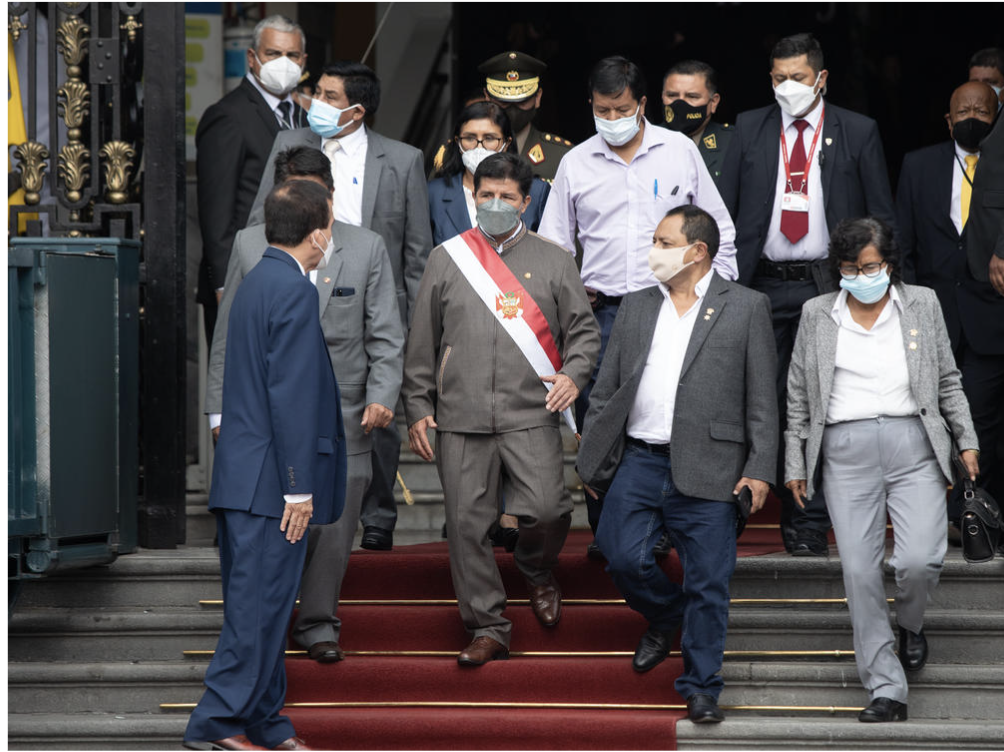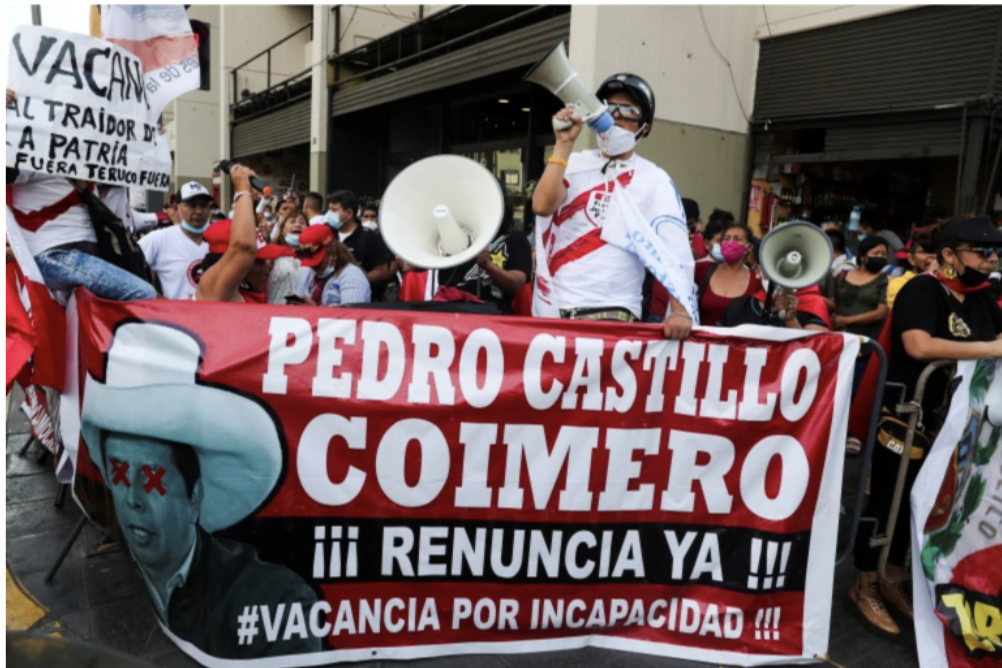Protests Against Peruvian Government Increase While Violence Rises
The Peruvian president leaving for an impeachment hearing at the Congress on Monday, March 28. Photo: GPB News
After more than eight hours of debate, Congress rejected the impeachment motion of President Pedro Castillo on the foundations of permanent moral incapacity. President Pedro Castillo and his lawyer showed up to the plenary session to exercise his defense, after which the debate of the congressmen and the vote took place.
Nevertheless, the opposition did not obtain the 87 votes needed to declare the presidency of the Republic vacant and remove the president from power. With 55 votes in favor, 54 against, and 19 abstentions, the vote on the impeachment motion against Pedro Castillo came to an end.
This was the second impeachment process motivated by the opposition in the 8 months since the president has been in office. The first, promoted at the end of 2021, did not receive the required votes either. Nevertheless, the process against Pedro Castillo included allegations of alleged corruption, the selection of controversial figures in ministries and high public positions, as well as a lack of capacity to exercise the leadership of the country.
However, the result of the vote was not surprising since the Peruvian media had anticipated that the radical opponents did not have the necessary votes to remove the leader from power. During his speech on Monday, Castillo recalled that he decided to go before Congress to "show maximum respect for the constitutional state and its control tools" and that his fight "is not for attachment to power, which is temporary," but "to serve the country.”
In his presentation, Castillo also said that the impeachment motion “does not contain a single element that validly supports it, and it is a compilation of versions from a sector of the press. We only find sayings without any corroboration, speculation, imaginary links, and without support in the facts, not in the law.
Thousands of people have taken to the streets calling for Castillo’s removal. Photo: Sebastian Castaneda/ Reuters
Pedro Castillo was sworn into office in July promising to be a hope for the poor and to improve education, health care, and other services. However, since his rise to power, he has struggled to find support from some political groups, including the ones represented in Congress.
As time goes by and as political controversies surge, Castillo's disapproval rating has reached almost 70 percent after less than a year in power. Since the impeachment proceedings began, thousands have taken to the streets calling for Castillo’s removal. In a country that has had four presidents in two years and intensive instability in its politics and economy throughout the last two decades, it is not surprising that its population has less attachment to their rulers. It is as if deep down, they have already accepted that all governors are doomed to corruption.


